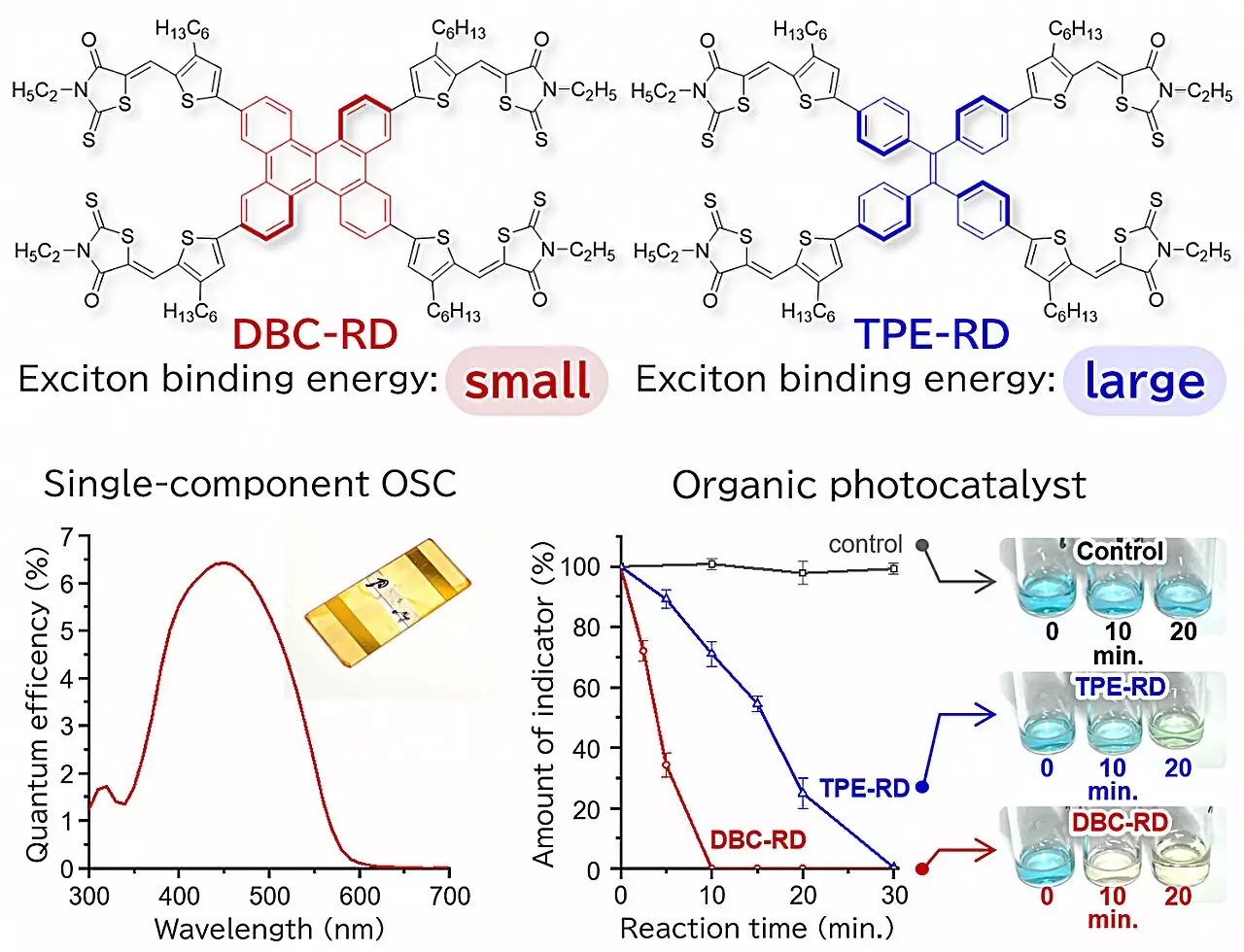As humanity shifts toward sustainable energy solutions, harnessing solar power has emerged as a critical focus. The advancement of optoelectronic devices, particularly solar cells, is fundamental in this transition. Researchers from Osaka University have recently made significant strides in optimizing these devices by manipulating the stacking of light-absorbing molecules. This breakthrough addresses the persistent challenge of maximizing efficiency in organic solar cells—an increasingly popular choice for their lightweight and flexible properties.
The Importance of Exciton-Binding Energy
The efficiency of organic solar cells hinges on their ability to convert absorbed light into electrical energy through the generation of free-charge carriers. A key player in this process is exciton-binding energy, which refers to the energy required to create free-charge carriers. Essentially, lower exciton-binding energy translates to easier generation of these carriers, leading to enhanced device performance. However, achieving low exciton-binding energy in solid-state systems has been a longstanding issue for researchers.
The Osaka University research team discovered that the arrangement of molecules—specifically, how they aggregate—drastically impacts exciton-binding energy. By synthesizing two similar star-shaped molecules, one with a flexible core and the other with a rigid one, they were able to observe distinct behaviors. While both types exhibited similar traits when dissolved in a solution, their performance diverged significantly when forming solid films. The rigid molecules stacked efficiently, akin to stacking plates, leading to lower exciton-binding energy and, consequently, improved energy conversion rates.
To validate their findings, the researchers constructed a single-component organic solar cell and a photocatalyst using each type of molecule. The results were telling: the devices made from the rigid molecules exhibited superior performance, highlighting the role of molecular rigidity in decreasing exciton-binding energy and enhancing free-charge carrier production. This revelation underscores the potential for selecting or engineering molecules based on their aggregation properties to drive advancements in optoelectronic technologies.
Implications for Future Technologies
The team’s findings present a promising avenue for the development of next-generation optoelectronic devices. By focusing on molecular design that promotes effective aggregation, researchers could unlock new levels of efficiency and performance. This could not only enhance the viability of organic solar cells but also lead to breakthroughs in other applications such as photocatalysts and flexible electronics.
As the global demand for clean energy solutions intensifies, the insights gained from this research could be pivotal. By understanding the role of molecular stacking in energy conversion, we can pave the way for more effective and sustainable solar technologies. This research not only enhances our grasp of organic materials but also illustrates how fundamental scientific inquiries can translate into tangible benefits for society. As we look forward, further exploration into molecular interactions could be key in shaping the future landscape of renewable energy.


Leave a Reply